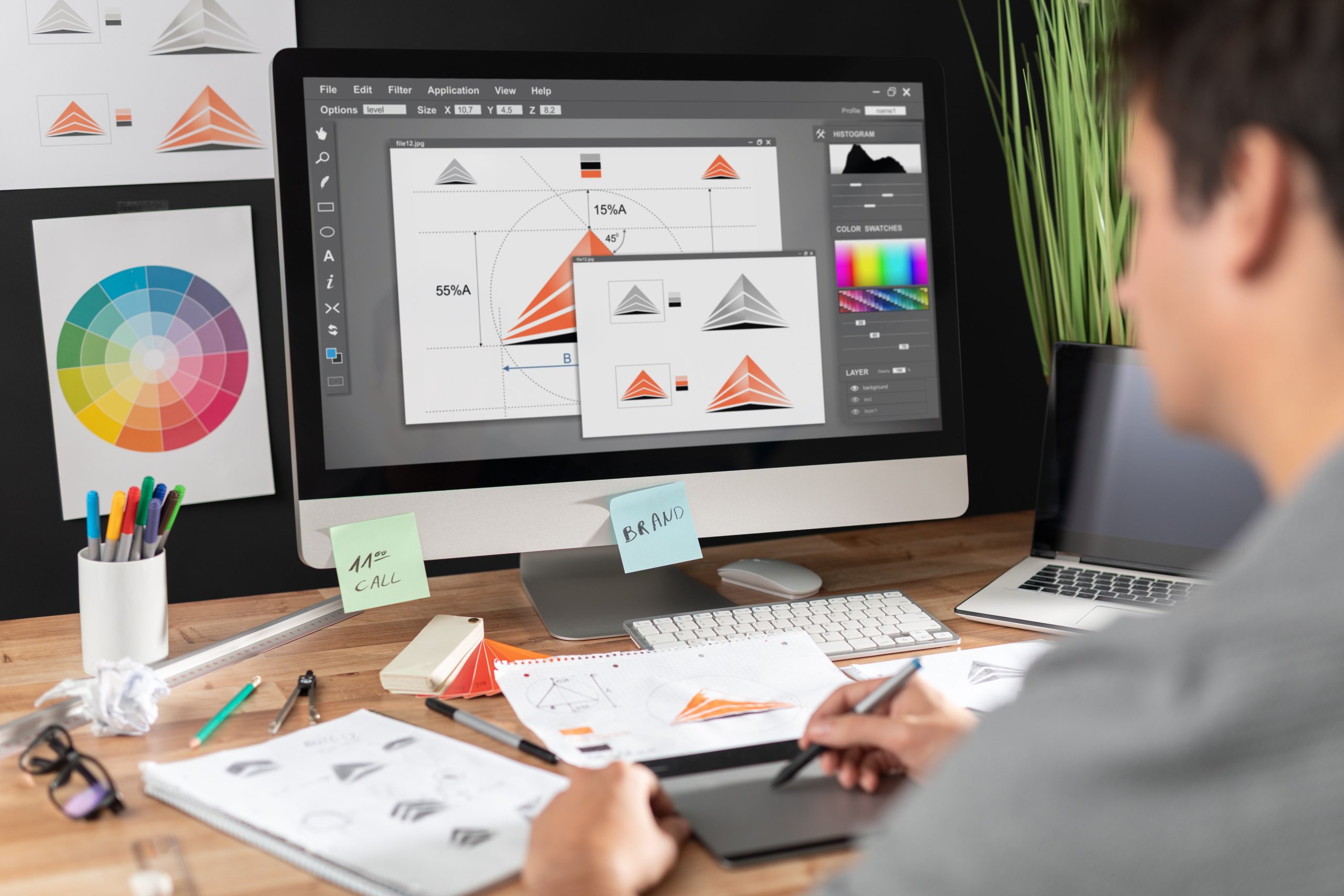Have you ever wondered what title encapsulates the skill and artistry of a Photoshop designer? Imagine a world where visual storytelling meets technical mastery, where every pixel bears the mark of creativity and precision. In this realm, professionals bring imagination to life through digital manipulation, weaving together images that captivate and inspire. But what exactly do we call these architects of visual wonder? Stay tuned as we unravel the mystery behind the elusive title that defines the wizards of Photoshop design and unlocks the gateway to a realm where art and technology converge seamlessly.
Roles in Photoshop Artistry
In the realm of Photoshop artistry, the role of a Graphic Designer stands as the visionary creator of digital masterpieces that captivate and communicate through color, typography, and composition. As a Graphic Designer, you master Photoshop techniques to bring your digital illustrations to life, utilizing graphic design software to craft mesmerizing and impactful visuals. Your expertise in image editing allows you to manipulate and enhance photos to perfection, creating stunning pieces that resonate with viewers. Through your creative compositions, you weave together elements seamlessly, showcasing your artistic flair and attention to detail. Your ability to blend colors harmoniously, play with typography to convey emotions, and arrange elements with precision sets you apart as a true digital artist. Embrace the power of Photoshop as you dive into the world of graphic design, where your skills in creating captivating digital artworks will continue to evolve and inspire.
Elements of Photoshop Art
Unleash your creativity in the digital realm of Photoshop artistry through mastering the essential elements that define captivating and impactful visual compositions. Dive into the world of Photoshop art by exploring its tools and techniques, essential for crafting stunning digital creations. Utilize layers, brushes, and filters to bring your artistic expressions to life, adding depth and dimension to your designs. The versatility of Photoshop panels, especially the layers feature, allows for seamless integration of images and text, enabling you to create visually stunning pieces that tell compelling stories through your designs. Find design inspiration in the endless possibilities that Photoshop offers, empowering you to push the boundaries of visual storytelling and create truly unique and engaging artwork. With Photoshop as your canvas and these fundamental elements at your disposal, the only limit to your creativity is your imagination.
History and Development of Photoshop
Embark on a journey through the evolution and milestones that have shaped the fascinating history of Photoshop, unraveling its transformation from humble beginnings to becoming an industry-standard powerhouse in digital image editing and manipulation. The Photoshop Evolution began in 1988 under the names Display and ImagePro before finally settling on Photoshop. Developed by Thomas and John Knoll, the software was acquired by Adobe in 1989, marking the start of a revolution in digital artistry. As Photoshop advanced, it introduced innovative creative tools like layers, brushes, and filters that revolutionized the way designers approached their work. These software innovations not only streamlined workflows but also opened up new realms of possibilities for designers worldwide. Over the years, Photoshop has continuously adapted to design trends, catering to the changing needs of the creative industry and setting the benchmark for digital design excellence. Its rich history is a testament to its enduring impact on the world of digital artistry.
Software and Tools Related to Photoshop
Discover the array of software and tools intricately connected to the world of Photoshop, shaping the creative landscape for digital artists and designers alike.
- Photoshop Software: Adobe’s flagship software for photo editing and digital artistry.
- Design Tools: Brushes, layers, and filters enabling intricate design work.
- Photo Editing: Extensive capabilities for retouching, enhancing, and manipulating images.
- Digital Artistry: Platforms for creating stunning digital artworks and illustrations.
- Graphic Design Software: Widely used by professionals for creating graphics, logos, and visual content.
From the versatile Photoshop software to the diverse range of design tools, the software and tools related to Photoshop are essential for anyone delving into digital artistry and graphic design. Whether you are editing photos, creating intricate designs, or exploring the realm of digital art, these tools are at the core of unleashing your creativity and bringing your artistic visions to life.
Additional Information on Photoshop
Delve deeper into the realm of Photoshop with a glimpse into its advanced features and functionalities. When it comes to Photoshop, the possibilities are vast. From mastering Photoshop Effects to diving into Image Editing techniques, the world of Digital Artistry awaits those who seek Photoshop Mastery. Here’s a table to give you a visual overview of what Photoshop has to offer:
| Photoshop Effects | Image Editing | Photoshop Techniques |
|---|---|---|
| – Filters | – Cropping | – Masking |
| – Blending Modes | – Color Correction | – Clipping Paths |
| – Text Effects | – Retouching | – Selection Tools |
| – Lighting Effects | – Sharpening | – Layer Styles |
| – 3D Effects | – Compositing | – Pen Tool |
With these tools at your disposal, you can craft stunning visuals, manipulate images with precision, and unleash your creativity like never before. Mastering these Photoshop features will elevate your digital artistry and empower you to create captivating designs that leave a lasting impact.
Graphic Design Job Titles
Exploring the diverse landscape of graphic design roles, one can uncover a myriad of job titles that define the industry’s dynamic and creative essence. In this field, you may encounter roles such as:
- Art Director
- Creative Director
- User Experience (UX) Designer
- Brand Identity Designer
- Multimedia Artist
Each of these positions plays a crucial role in shaping the visual world around us. As an Art Director, you would be responsible for overseeing the visual aspects of a project and ensuring they align with the overall vision. Creative Directors, on the other hand, lead and guide creative teams to produce innovative designs. UX Designers focus on creating seamless user experiences, while Brand Identity Designers specialize in developing consistent brand visuals. Lastly, Multimedia Artists use various mediums to create engaging visual content across different platforms. Embrace the diversity of graphic design job titles and find the role that resonates most with your creative spirit.
Skills Needed in Graphic Design
To thrive in graphic design, mastering Adobe Creative Suite and understanding design principles like typography are essential skills. Design principles serve as the foundation for creating visually appealing and effective designs. Knowing how to manipulate typography effectively can greatly impact the message being conveyed. Additionally, a solid grasp of color theory is crucial for creating harmonious and visually striking compositions.
Software proficiency is a non-negotiable requirement in today’s graphic design landscape. Being well-versed in tools like Adobe Photoshop, Illustrator, and InDesign is a must. These programs allow you to bring your creative visions to life with precision and finesse.
Collaboration and communication are key aspects of a successful graphic designer’s toolkit. Working effectively with clients, team members, and other stakeholders ensures that your designs align with the intended goals and messages. Being able to articulate your design choices and incorporate feedback is vital for producing impactful work.
Job Growth and Salary in Graphic Design
Experiencing a steady rise in demand and compensation, the field of graphic design offers a dynamic landscape for career growth and financial reward. Here’s what you need to know about job growth and salary trends in graphic design:
- Job Market:
- 3% growth projected from 2020 to 2030
- Demand for graphic designers in various industries
- Digitalization increases need for web and multimedia designs
- Opportunities in marketing, advertising, and computer systems design
- Creative skills and technological proficiency are essential
The salary trends in graphic design reveal a varied landscape:
- Median annual wage for graphic designers in 2020 was $53,380
- Highest 10% earned more than $89,210
- Lowest 10% earned less than $30,810
- Varied salaries based on experience, location, and industry
- Freelance graphic designers may have fluctuating incomes
With a promising industry outlook, opportunities for career advancement and salary comparison present themselves within the ever-evolving realm of graphic design.




